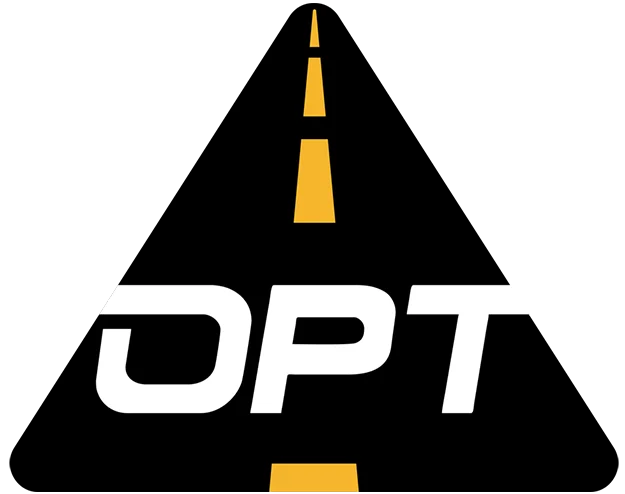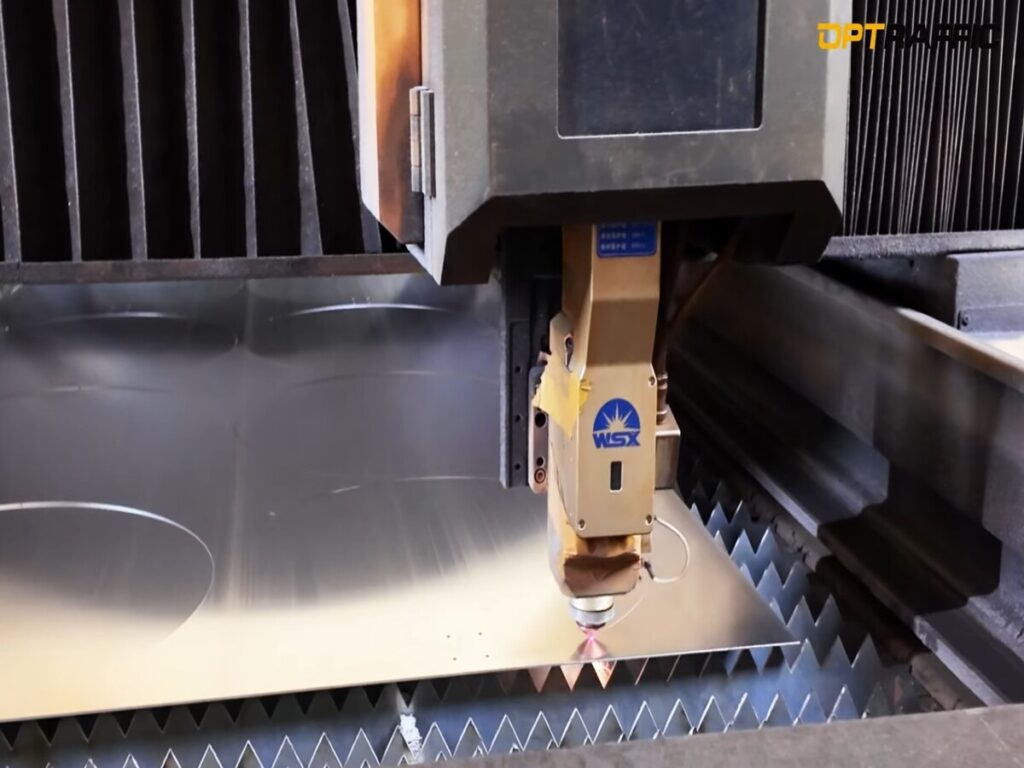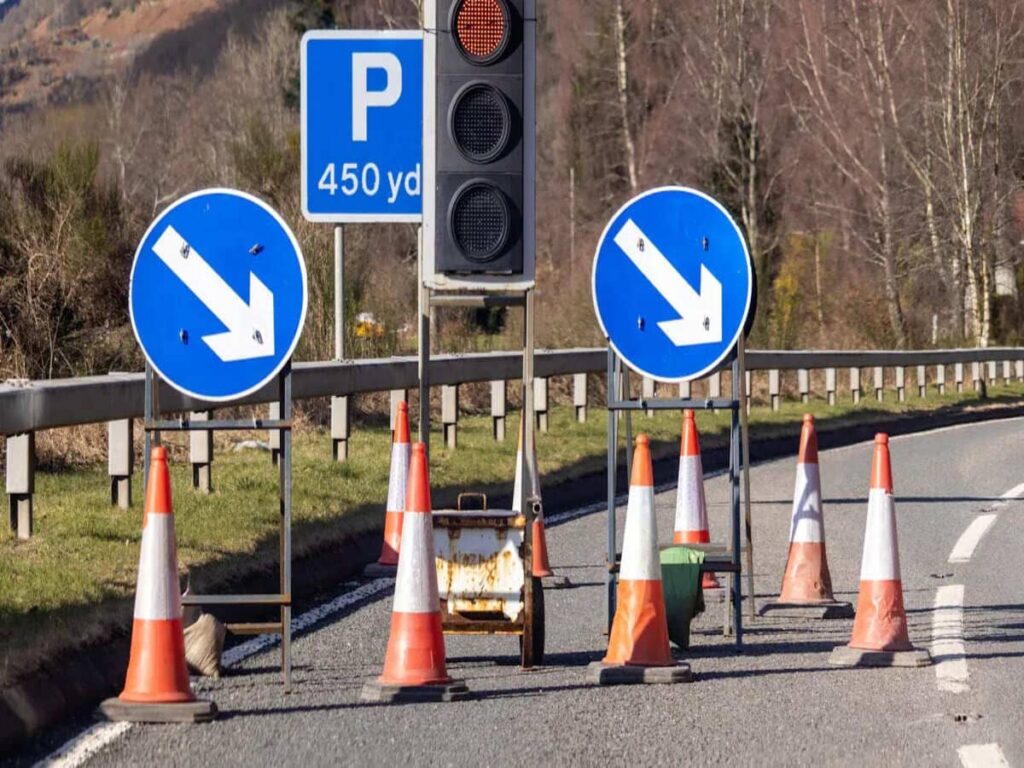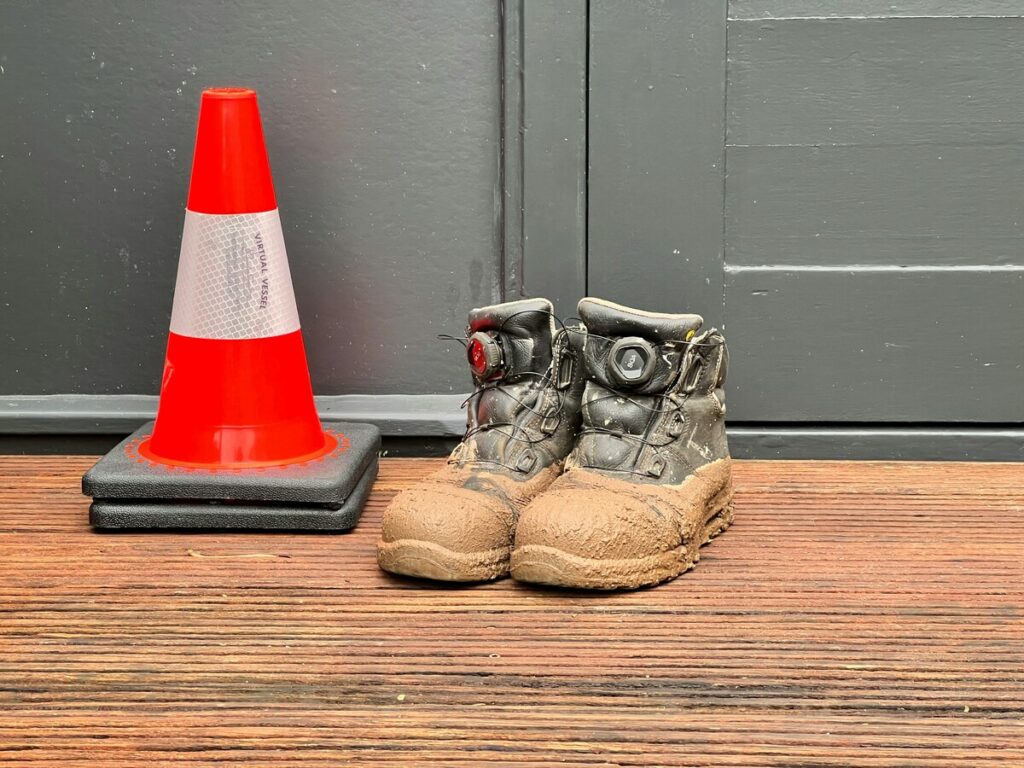
La pintura de plomo plantea un peligro grave durante los proyectos de renovación, Especialmente en edificios más antiguos. Debe priorizar la seguridad de los trabajadores para evitar exposiciones nocivas. El polvo y las virutas de plomo se pueden propagar rápidamente, creando riesgos tanto para los trabajadores como para el público. El uso de conos de colores le ayuda a establecer límites claros alrededor de las zonas de trabajo.. Estos conos de colores guían a los trabajadores y alertan a otros sobre peligros potenciales.. También crean un ambiente más seguro al mantener a personas no autorizadas alejadas de áreas peligrosas.. Al tomar estas precauciones, proteges a todos los involucrados en el proyecto.
Conos de tráfico de Optsigns están diseñados para mejorar la seguridad, con alta visibilidad y durabilidad para ayudarle a gestionar zonas peligrosas de forma eficaz, Garantizar un espacio de trabajo más seguro tanto para los trabajadores como para los transeúntes..
Introducción a los riesgos de la pintura con plomo en casas antiguas
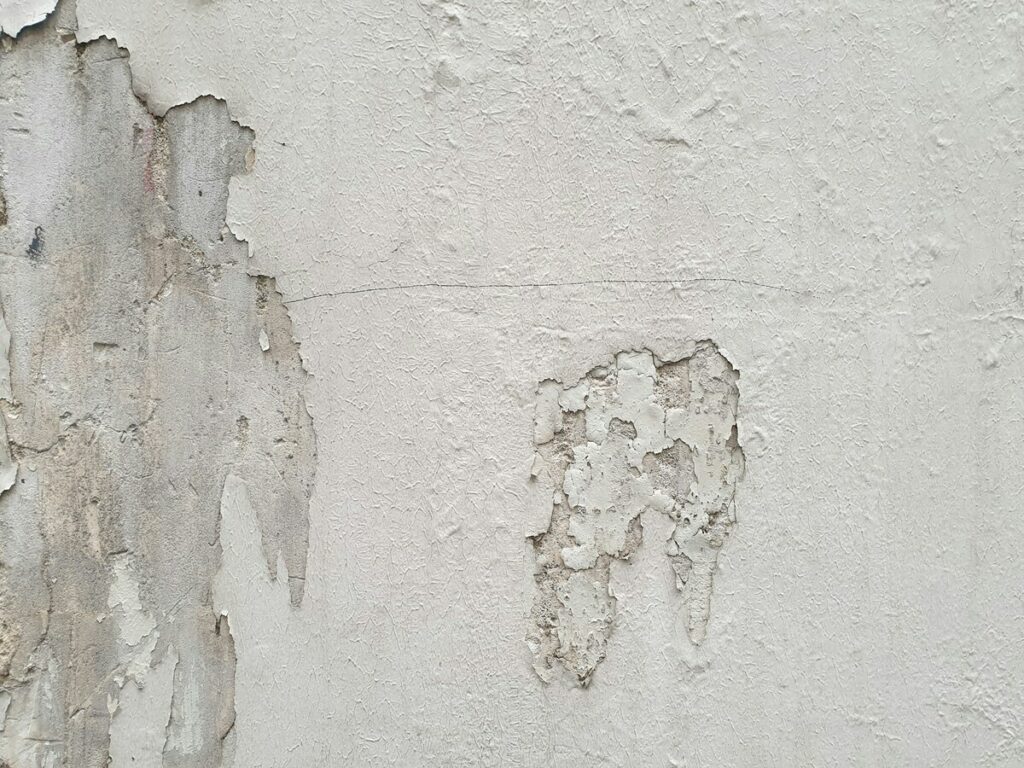
La prevalencia de la pintura con plomo en los edificios antiguos
Muchas casas antiguas, especialmente aquellos construidos antes 1978, contener pintura a base de plomo. durante ese tiempo, El plomo era un ingrediente común en la pintura debido a su durabilidad y acabado vibrante.. Sin embargo, Esta pintura se convierte en un problema grave ya que se deteriora.. Agrietamiento, peladura, o la pintura descascarada libera materiales peligrosos al medio ambiente. Los proyectos de renovación en estas casas a menudo alteran la pintura., aumento de los riesgos de exposición al plomo para trabajadores y residentes.
Siempre debe asumir que las casas construidas antes 1978 contener pintura a base de plomo a menos que las pruebas demuestren lo contrario. Incluso pequeñas cantidades de polvo de plomo pueden propagarse rápidamente, contaminar superficies y presentar riesgos para la salud. Identificar y abordar estos riesgos es esencial antes de comenzar cualquier trabajo de renovación..
Impactos en la salud de la exposición al plomo
Los riesgos de exposición al plomo afectan tanto a niños como a adultos, pero los niños son especialmente vulnerables. El plomo puede dañar sus cerebros y sistemas nerviosos en desarrollo, conduciendo a problemas a largo plazo. Los problemas de salud comunes en los niños incluyen un crecimiento lento, dificultades de aprendizaje, y desafíos de comportamiento. También pueden experimentar problemas de audición y del habla., coeficiente intelectual más bajo, y problemas para concentrarse.
Los adultos enfrentan diferentes problemas de salud. La exposición prolongada puede causar hipertensión, trastornos nerviosos, y problemas de memoria. También puede provocar dolores musculares y articulares o problemas reproductivos.. La siguiente tabla destaca los impactos en la salud de la exposición al plomo.:
| Grupo | Problemas de salud |
|---|---|
| Niños | coeficiente intelectual reducido, Daño al cerebro y al sistema nervioso., Dificultades de aprendizaje y de conducta., Crecimiento lento, Problemas de audición, dolores de cabeza |
| Adultos | Problemas reproductivos, Presión arterial alta e hipertensión., Trastornos nerviosos, Problemas de memoria y concentración., Dolores musculares y articulares |
Comprender estos riesgos enfatiza la importancia de manipular el plomo y otros materiales peligrosos con cuidado.. Protegerse usted y a los demás de la exposición al plomo siempre debe ser una prioridad máxima durante los proyectos de renovación..
Comprender la renovación de la EPA, Reparar, y pintura (PVP) Normas
Descripción general de las regulaciones sobre pintura con plomo de la EPA
El liderazgo de la EPA Renovación, Reparar, y pintura (PVP) Rule desempeña un papel fundamental a la hora de protegerlo a usted y a otras personas de la exposición al plomo durante los proyectos de renovación.. Este reglamento, Totalmente efectivo desde abril. 22, 2010, Requiere que los trabajadores sigan prácticas seguras contra el plomo para minimizar los peligros.. Si trabajas en casas, escuelas, o instalaciones de cuidado infantil construidas antes 1978, debes cumplir con estas reglas.
La Regla PRR exige que los trabajadores y las empresas obtengan una certificación. Los renovadores certificados deben completar una capacitación sobre prácticas laborales seguras con el plomo.. Durante la renovación, debe asegurarse de que el polvo y los escombros permanezcan contenidos dentro del área de trabajo. Estos pasos ayudan a prevenir la contaminación por plomo y proteger a todos los involucrados..
Las disposiciones clave de la regla RRP incluyen:
- Certificación para contratistas que trabajan en proyectos que alteran la pintura a base de plomo.
- Prácticas laborales específicas para reducir el polvo y los escombros con plomo.
- Responsabilidad de los renovadores certificados de mantener un ambiente de trabajo seguro y limpio..
Adhiriéndose a estas regulaciones, puede reducir significativamente los riesgos asociados con la exposición al plomo.
Diferencias entre las regulaciones de la EPA y HUD
Si bien tanto la EPA como HUD objetivo de abordar los peligros del plomo, sus regulaciones difieren en varios aspectos. Comprender estas diferencias le ayuda a cumplir con los estándares adecuados para su proyecto..
| Etapa del trabajo | Requisito | HUD LSHR | PVP de la EPA |
|---|---|---|---|
| Capacitación | Requisitos de capacitación para trabajadores y supervisores | HUD exige que todos los trabajadores completen un plan de estudios aprobado por HUD. | La EPA certifica empresas y requiere un renovador certificado en el sitio. |
| Fin del trabajo | Verificación posterior a la renovación | HUD exige exámenes de autorización realizados por una entidad independiente. | La EPA permite la verificación de limpieza por parte del renovador. |
| Notificación a los ocupantes | Informar a los residentes sobre los peligros del plomo | HUD requiere avisos a los ocupantes dentro 15 días de evaluación del peligro del plomo. | La EPA no exige notificación a los residentes que no son propietarios. |
Estas distinciones resaltan los enfoques únicos de cada agencia.. Por ejemplo, HUD se centra en pruebas de autorización independientes, mientras que la EPA enfatiza la verificación de limpieza en el sitio. Conocer estas diferencias garantiza que cumplirá con los requisitos correctos para su proyecto de renovación..
Identificación de pintura con plomo y configuración de trabajo seguro
Cómo identificar pintura a base de plomo en edificios antiguos
Identificar pintura a base de plomo en edificios antiguos es un primer paso fundamental para garantizar la seguridad durante los proyectos de renovación. Puede utilizar varios métodos eficaces para determinar si hay pintura a base de plomo.. Comience con una inspección visual. Busque varias capas de pintura., especialmente en casas construidas antes 1978. Agrietamiento, peladura, o pintura descascarada a menudo indica peligros potenciales de plomo.
Para una evaluación más precisa, considere usar kits de prueba de pintura con plomo. Estos equipos, disponible en la mayoría de las tiendas de mejoras para el hogar, Le permite probar superficies rápidamente.. Siga las instrucciones cuidadosamente para obtener resultados confiables.. Si necesita una evaluación más exhaustiva, contratar profesionales certificados por la EPA. Utilizan herramientas y técnicas especializadas para identificar pintura a base de plomo y garantizar una manipulación segura.. Este paso es especialmente importante si sospecha una contaminación extensa..
Al identificar tempranamente la pintura a base de plomo, Puede tomar las precauciones necesarias para protegerse a sí mismo y a los demás de la exposición..
Configurar adecuadamente un ambiente de trabajo seguro con conos de colores
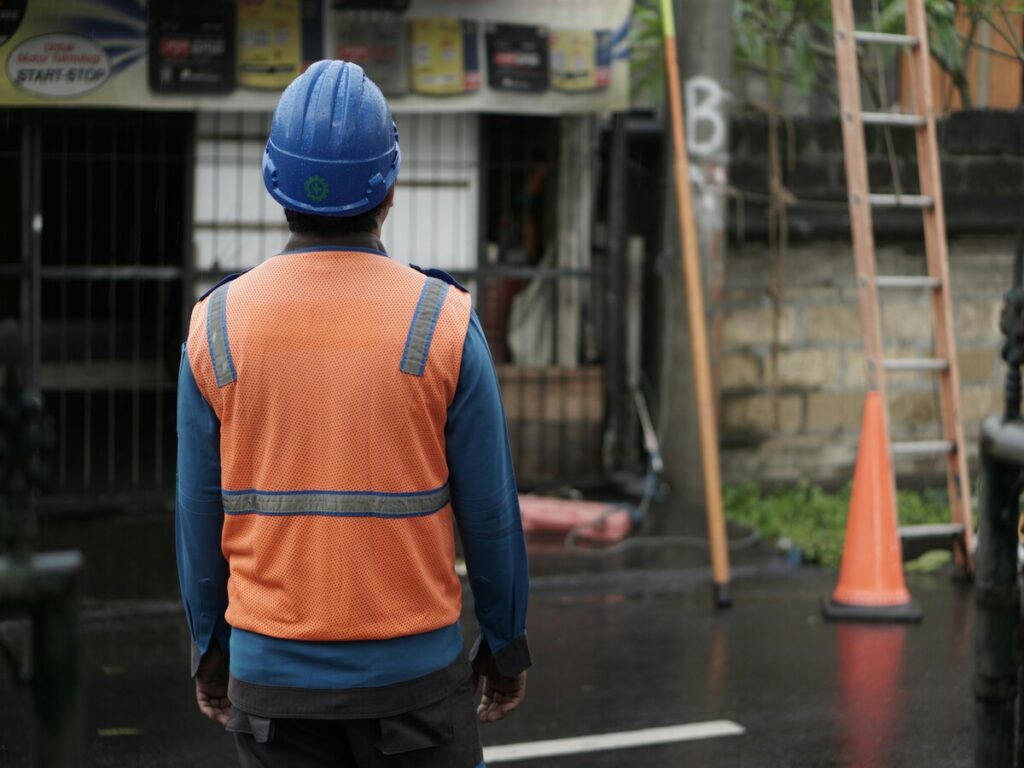
Una vez que identifique la pintura a base de plomo, Crear un entorno de trabajo seguro se vuelve esencial. Los conos de colores juegan un papel vital en la creación de un espacio de trabajo seguro. Utilice estos conos de colores para marcar claramente los límites de la zona de trabajo. Esto ayuda a mantener a personas no autorizadas alejadas de áreas peligrosas y garantiza que los trabajadores permanezcan dentro de los espacios designados..
Coloque los conos de colores estratégicamente alrededor del lugar de trabajo.. Por ejemplo, use conos de colores brillantes para resaltar las entradas, salidas, y zonas restringidas. Esta barrera visual minimiza el riesgo de exposición accidental al polvo o escombros de plomo.. Combine esta configuración con prácticas laborales sin plomo para mejorar la seguridad.. Cubra pisos y muebles con láminas de plástico para evitar la contaminación.. Selle puertas y rejillas de ventilación para evitar que el polvo con plomo se propague a otras áreas..
Los conos de colores también sirven como recordatorio constante para que los trabajadores sigan prácticas laborales seguras con el plomo.. Reforzan la importancia de mantener un espacio de trabajo limpio y organizado. Mediante el uso de estas herramientas de manera efectiva, Crea un entorno más seguro para todos los involucrados en la renovación..
Con OPTsigns conos de trafico, podrás garantizar que la seguridad sea una prioridad en todo momento. Diseñado para ofrecer durabilidad y alta visibilidad, Estos conos de colores ayudan a mantener las áreas peligrosas claramente marcadas., Permitir que los trabajadores se mantengan concentrados en la tarea en cuestión mientras se minimizan los riesgos..
Protección de los trabajadores y reducción del polvo
Medidas de seguridad para los trabajadores al manipular pintura con plomo
Protegerse de los peligros del plomo requiere una adecuada Equipo de protección personal (PPE). La exposición al plomo puede ocurrir por inhalación o contacto con superficies contaminadas., por lo que llevar el equipo adecuado es esencial. el nivel de PPE que necesita depende de la concentración de plomo en su entorno de trabajo. Utilice la siguiente tabla para determinar el equipo adecuado.:
| Concentración de plomo (microgramos) | EPP requerido |
|---|---|
| 50 o menos | Respirador de media máscara con purificación de aire y filtros de alta eficiencia. |
| 50 a 250 | Mascarilla completa con purificación de aire y filtros. |
| 250 a 500 | Mascarilla respirador purificante motorizada con filtros de alta eficiencia o media mascarilla con sistema de suministro de aire en modo presión positiva |
| 500 a 1000 | Mascarilla facial completa con sistema de suministro de aire., incluyendo una capucha, casco, o traje de cuerpo entero en modo de presión positiva |
| 1000 o mayor | Aparato respiratorio autónomo (SCBA) funcionando en modo de presión positiva |
| EPI adicional | Guantes no permeables, monos, botas, gafas de protección, y es posible que se requieran estaciones de lavado de ojos dependiendo de la situación. |
Inspeccione siempre su EPP antes de usarlo para asegurarse de que esté en buenas condiciones.. Reemplace el equipo dañado o desgastado inmediatamente. Estas precauciones de seguridad reducen el riesgo de exposición y lo mantienen seguro durante los proyectos de renovación..
Procedimientos para reducir el polvo con plomo
Minimizar el polvo con plomo es fundamental para la seguridad de los trabajadores y la salud pública. Siga estas mejores prácticas para controlar el polvo durante las actividades de renovación:
- Quitar muebles, alfombras, cortinas, y otros artículos del hogar del área de trabajo hasta que se complete la limpieza.
- Envuelva bien los elementos inmuebles con láminas de plástico y séllelos con cinta adhesiva..
- Cubra los pisos con láminas de plástico para atrapar el polvo y los escombros..
- Cierre y selle todas las puertas del área de trabajo para evitar que se propague el polvo..
- Apagar calefacción de aire forzado y sistemas de aire acondicionado, y cubra las rejillas de ventilación con láminas de plástico.
- Rocíe las superficies con un atomizador o un rociador de bomba antes de lijar., raspado, perforación, o cortar para suprimir el polvo.
- Usar un HEPA Aspire con frecuencia para limpiar el área de trabajo y eliminar las partículas finas..
Estos pasos ayudan a contener el polvo con plomo y proteger a todos los involucrados en el proyecto.. Combinando estos procedimientos con el EPP adecuado, usted crea un ambiente más seguro y reduce los riesgos asociados con la exposición al plomo.
Mantener un área de trabajo limpia y eliminación adecuada de desechos
Mantener las zonas de trabajo limpias y seguras
Mantener una zona de trabajo limpia es esencial para minimizar los riesgos del plomo durante los proyectos de renovación.. Un ambiente limpio reduce el riesgo de propagación del polvo de plomo y protege a todos los involucrados.. Siga estos pasos para garantizar que su área de trabajo permanezca segura y organizada:
- Utilice aspiradoras de polvo y sistemas de escape con clasificación HEPA en todas las máquinas para capturar partículas finas de manera efectiva..
- Limpia tu área de trabajo al final de cada día hasta que no haya polvo., escombros, o restos de residuos.
- Trapee bien los pisos sin alfombras después de completar el proyecto para eliminar los contaminantes restantes..
- Limpie las paredes con una aspiradora HEPA o un paño húmedo para eliminar la acumulación de polvo..
- Aspire todas las superficies y objetos restantes con una aspiradora HEPA para garantizar una limpieza profunda..
- Limpie todas las superficies con paños de limpieza desechables húmedos.. Continúe limpiando hasta que los paños salgan limpios..
Estas prácticas le ayudan a mantener un entorno seguro y libre de polvo., reducir los riesgos asociados con la exposición al plomo.
Eliminación adecuada de residuos contaminados con plomo
Eliminación adecuada de residuos contaminados con plomo Es crucial para prevenir la contaminación ambiental y cumplir con los requisitos legales.. Estados Unidos tiene pautas específicas para el manejo de materiales a base de plomo.. La siguiente tabla describe los aspectos clave de estas regulaciones.:
| Aspecto | Descripción |
|---|---|
| Pintura residencial a base de plomo | Los contratistas pueden gestionar la pintura residencial a base de plomo como residuo doméstico para reducir el envenenamiento por plomo.. |
| Eliminación de artículos contaminados con plomo | Existen pautas específicas para la eliminación de juguetes y otros artículos domésticos contaminados con plomo.. |
| Reciclaje de baterías de plomo-ácido | Existen regulaciones para el reciclaje de baterías de plomo-ácido., categorizado como residuo universal. |
Siga siempre las regulaciones locales y federales al deshacerse de materiales contaminados con plomo.. Usar sellado, bolsas resistentes para contener los residuos de forma segura. Etiquete las bolsas claramente para indicar su contenido.. Transporte los residuos a una instalación de eliminación aprobada para garantizar una manipulación segura.. Al adherirse a estas prácticas, proteges el medio ambiente y cumples con las normas legales.
Verificación de limpieza y autorización
Procedimientos de limpieza posteriores a la renovación
Después de completar un proyecto de renovación, Debe limpiar minuciosamente el área de trabajo para eliminar los riesgos de plomo.. Una limpieza adecuada garantiza la seguridad de los trabajadores, residentes, y el entorno circundante. Siga estos pasos para lograr un espacio libre de plomo:
- Limpie las paredes aspirándolas con una aspiradora HEPA o limpiándolas con un paño húmedo.
- Aspire todas las superficies y objetos restantes en el área de trabajo utilizando una aspiradora HEPA..
- Limpie todas las superficies y objetos con un paño húmedo para eliminar el polvo restante..
- Trapee bien los pisos sin alfombra para capturar los contaminantes restantes..
- Realice una inspección visual para confirmar que no haya polvo., escombros, o restos de residuos.
- Utilice paños de limpieza desechables para una revisión final.. Compare los resultados con una tarjeta de verificación de limpieza para garantizar que el área cumpla con los estándares de seguridad..
Además, Mantener la limpieza durante todo el proyecto.. Coloque la basura en bolsas de plástico resistentes mientras trabaja.. Aspire el área con frecuencia y limpie sus herramientas diariamente.. Lávese las manos y la cara durante los descansos y al final del día.. Deseche o limpie adecuadamente su equipo de protección personal.. Estas prácticas lo ayudan a minimizar la exposición al plomo y mantener un espacio de trabajo seguro..
Liquidación y verificación de clientes potenciales
Una vez completada la limpieza, debe verificar que el área esté libre de peligros de plomo. La verificación de la autorización de plomo implica inspeccionar la propiedad para garantizar que no haya polvo., escombros, o la contaminación por plomo permanece. Un análisis de polvo con plomo es un método común utilizado para este propósito.. Esta prueba mide la cantidad de polvo de plomo en las superficies para confirmar que el área es segura..
En conclusión, Proteger a los trabajadores de los peligros de la pintura con plomo en los sitios de renovación es crucial tanto para su salud como para su seguridad.. Siguiendo una identificación adecuada, medidas de proteccion, y procedimientos de limpieza, Los contratistas pueden reducir significativamente el riesgo de exposición al plomo.. Los conos de colores del tráfico juegan un papel vital en este proceso., ayudando a crear límites claros, controlar el acceso a zonas peligrosas, y guiar a los trabajadores y peatones de forma segura alrededor de la zona de trabajo. Incorporando conos de tráfico en un plan de seguridad integral, no sólo puede garantizar el cumplimiento normativo sino también proporcionar un entorno de trabajo más seguro para todos los involucrados.
